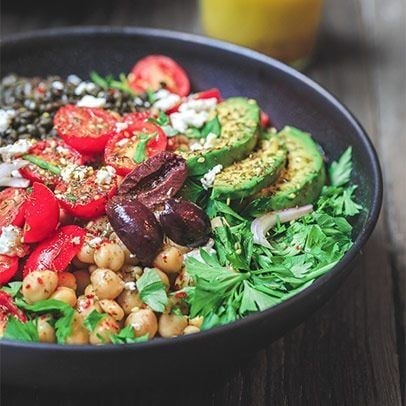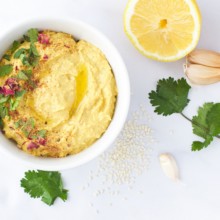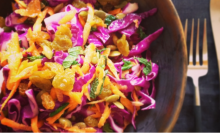
Including extra virgin olive oil in Mediterranean diet recipes is a great way of achieving the health benefits of best olive oil.
Updated September 13 2023
In a world where unhealthy diet and lifestyle is a growing problem, there is a need for a better, healthier way of living. The consumption of saturated fats, for instance, is one of the factors that contribute to this problem.
Fortunately, there is a solution that is not only delicious but also beneficial for your health – extra virgin olive oil, widely considered the best olive oil. Packed with polyphenols, extra virgin olive oil has many olive oil benefits that can help prevent illness and improve overall health.
The Mediterranean diet is one of the most popular diets that include extra virgin olive oil as its primary source of fat. However, to truly reap the benefits, it is essential to combine it with an overall healthy lifestyle. So, when making nutritional choices, don’t forget the importance of consuming the best olive oil for a healthier lifestyle.
When you’re new to the Mediterranean diet, one way to make a big impact on your eating habits (and health) is to consume more beans and lentils. This recipe, which makes for a hearty lunch or dinner, features a base of delightfully chewy farro, lentils, and chickpeas, topped with veggies, avocado, Kalamata olives, and feta plus a bright lemony garlic dressing. Even better: You can easily save leftovers for a quick throw-together meal the next day.
Mediterranean Grain Bowl
Ingredients
- Morocco Gold extra virgin olive oil
- Salt
- 1 zucchini squash, sliced into rounds
- 2 to 3 cups cooked farro (from 1 cup uncooked farro, prepared according to package)
- 2 cups cooked brown lentils or from canned lentils, drained and rinsed (see notes for lentil cooking instructions, if needed)
- 2 cups cooked chickpeas or from canned chickpeas, drained and rinsed
- 2 cups cherry tomatoes, halved
- 2 shallots, sliced
- 2 avocados, skin removed, pitted and sliced
- 1 cup fresh chopped parsley
- Handful pitted kalamata olives
- Sprinkle crumbled feta cheese, optional
For the Dressing
- 1/2 cup Morocco Gold extra virgin olive oil
- 2 ½ tbsp fresh lemon juice
- 1 garlic clove, minced
- 2 ½ tsp quality Dijon mustard
- Salt and pepper
- 1 tsp Za'atar spice
- ½ tsp ground Sumac
Instructions
- Cook Zucchini. In a non-stick pan or skillet, heat 2tbsp olive oil over medium-high heat until shimmering but not smoking. Add the sliced zucchini and saute on both sides until tender. Remove zucchini with a slotted spoon and place on a paper towel to drain any excess oil. Season lightly with salt.
- Prepare dressing. Add the dressing ingredients to a mason jar. Close the lid tightly and give it a good shake. Set aside for now (but shake again before using).
- Assemble grain bowls. Divide the cooked farro, lentils, and chickpeas equally among four dinner bowls (it'll come to ½ cup of each per bowl). Add cooked zucchini, tomatoes, shallots, avocado slices, parsley, and kalamata olives. Season lightly with salt, pepper and more za'atar, if you like. Drizzle a bit of the dressing on top (about 2 tbsp per bowl). Finish with crumbled feta - if you like.
- Serve at room temperature or warm, if farro and pulses were just cooked. It's best to mix the ingredients in each bowl to allow the dressing flavours to infuse. If you have a bit of dressing left, serve it alongside.
About Lentils
Lentils belong to the legume family. They resemble a tiny bean, grow in pods, and come in red, brown, black, and green varieties. They also contain high levels of protein and fibre.
Lentils are relatively quick and easy to prepare, and their low cost makes them an accessible form of high-quality protein for many people around the world.
Types Of Lentils
There are three main types of lentils in the United States. These include:
- Brown lentils: These have a mild, earthy flavor, hold their shape well, but will become mushy when overcooked. These work great in soups and as a stand-alone side. They range in color from light brown to black.
- French green, or Puy, lentils: These have a peppery taste and a crunchy texture that can make for a satisfying salad.
- Red lentils: These are common in Middle Eastern or Indian cuisine and are actually brown Massor lentils after the removal of their hulls.
Other types include black Beluga lentils, which resemble caviar, and are more expensive. White lentils, which are black lentils without the hull, and Macachiados lentils, which have a distinctive strong, nutty taste and often feature in Mexican dishes.
Benefits
Heart health
Lentils are a plentiful source of fibre, folic acid, and potassium. These nutrients all support heart health. Lentils add essential vitamins, minerals, and fibre to the diet. They also provide protein and are an excellent replacement for meat in meals. According to the National Institutes of Health (NIH), lentils are one of the best food sources for potassium.
Pregnancy
Lentils provide a large amount of folate. Folate is critical for preventing neural tube defects in newborns. This essential vitamin can also reduce the risk of gestational diabetes. A 2019 study of 14,553 pregnant women found that those who took more folate during pregnancy were less likely to develop gestational diabetes.
Cancer
Lentils also provide selenium. Selenium may decrease the rates that tumors grow. It may also improve a person’s immune response to infection by stimulating the production of T cells. T cells kill disease. The NIH note that selenium may help reduce rates of colorectal, prostate, lung, bladder, skin, esophageal, and gastric cancers.
Fighting fatigue
Iron deficiency is a common cause of fatigue. Not getting enough iron in the diet can affect how efficiently the body uses energy. There are two types of iron: heme and nonheme.
Plants provide nonheme iron, and lentils are a particularly good source.
Digestion, regularity, and satiety
Adequate fibre intake serves as an important factor in weight loss by functioning as a “bulking agent” in the digestive system. Fibre in the diet helps to increase the feeling of fullness and reduce appetite. This can reduce a person’s overall calorie intake. The high fiber content in lentils also helps keep the digestive tract healthy, which in turn, prevents constipation and promotes regular bowel movements.
Chickpeas
Chickpeas, or garbanzo beans, are a type of legume. The most common type has a round shape and a beige colour but other varieties are black, green, or red. Their nutrients have a range of health benefits, almost as wide ranging as extra virgin olive oil and are therefore a great companion for a healthy diet.
For people who are cutting down on meat consumption, a dish of chickpeas and rice, for example, can contribute a significant amount of protein to the diet. A cup of chickpeas provides almost one-third of an adult’s daily protein needs.
Important Disclaimer
The information provided on this website is for general informational purposes only. All content, including text, graphics, images, and information, is presented as an educational resource and is not intended as a substitute for professional medical advice, diagnosis, or treatment.
Please consult with a qualified healthcare provider before making any decisions or taking any action based on the information you find on this Website. Do not disregard, avoid, or delay obtaining medical or health-related advice from your healthcare provider because of something you have read on this Website.
If you think you may have a medical emergency, call your doctor, go to the nearest emergency department, or call emergency services immediately. We are not responsible for any adverse effects resulting from your use of or reliance on any information or content on this Website.
By using this Website, you acknowledge and agree to this disclaimer in full.



